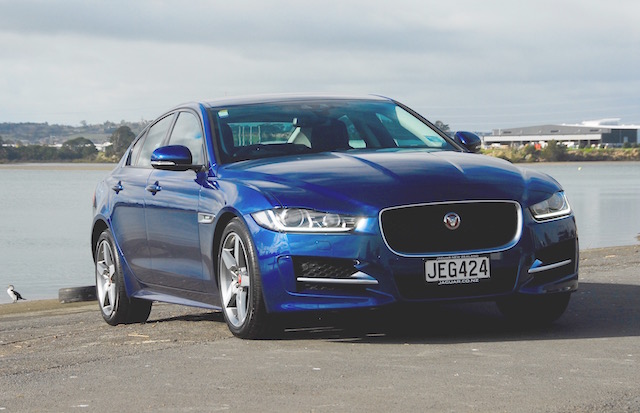
It was at the global launch of the Jaguar XJ in France in 2010. Parked outside the hotel in Versailles for the occasion were a treasured D-Type and C-Type, watched over by a Jaguar Heritage minder. Both cars had celebrated race histories.
“Jump in the D and I’ll take your picture,” said the minder. “I can’t let you drive it but you can sit in it.” It was one of the D-Types that had starred at Le Mans in the early 1950s. I wondered out loud what it would be like to drive. “You’d soon know after the first moment or two,” he said.

They call it the 50-metre test. Engineers often talk about it. It’s a handshake of sorts, when the car first tells you a little about itself: the smell of the cabin, the feel of the driver’s seat, the touch of controls, what the engine sounds like when it fires, the exhaust note after a blip on the throttle, the weight of the clutch, the shift into first gear, the first turn of the steering wheel …
I drove past 50 metres and beyond the other day, this time at the wheel of the rear-drive Jaguar XE, the new compact sedan made up of 75 per cent aluminium.
It was a brief run, a few low-speed kilometres in the upgraded R-Sport variant, just me and Jaguar NZ general manager James Yates. The car had just landed in Auckland.

“You’re the first Kiwi journalist to drive the XE,” said Yates. The other writers on the premium motoring roster will get a lot more time at the wheel of the XE towards the end of the month, once Jaguar staff complete their in-house training on the car.
So what’s the XE look like in the flesh? Nice profile, the sloping roofline seamlessly joining both the front and rear. Up front wide, slim headlights and a trademark upright Jaguar grille sit above ample air intakes. A similarly styled light arrangement ties the rear end together. It’s a conservative, but persuasive, look.
The inside is more of the same: stylish but reserved. There’s a wraparound dashboard similar in layout to that in the bigger Jaguar XJ. A touchscreen dominates the centre of the dash, above the heating and air-conditioning controls and ahead of the rotary gear controller and cupholders in the centre console. All-in-all, it’s an easy-peasy place to be.
The R-Sport gets sportier settings and bigger 18-inch wheels than the 17-inch alloys on the entry-level XE Pure, hence the moniker. Under the bonnet is a turbocharged 2.0-litre four-cylinder petrol engine delivering 147kW at 5500rpm and 280Nm between 1750-4000rpm to the rear wheels via an eight-speed automatic gearbox.

The skip through a couple of suburbs at a maximum 60km/h is hardly a road test. But it showed up a comfortable but slightly firm ride, quick, well-weighted steering, and whip-smart gearbox.
The petrol-powered R-Sport will cost $79,900 when it goes on sale in a few weeks. The diesel variant, running a 2.0-litre oil-burner delivering 132kW at 4000rpm and 430Nm between 1750-500rpm, will retail for $81,900.
The entry-level XE Pure is listed at $74,900 for the petrol and $76,900 for the diesel. The better equipped XE Prestige, in the same order, is $78,900 and $80,900. The $106,000 XE S is the premium model, running the 3.0-litre V6 petrol engine from the F-Type, good for 250kW at 6500rpm and 450Nm at 4500rpm.
Jaguar claims town-and-around fuel use for the XE range of 4.2-litres/100km (67mpg) for the 2.0-litre diesel; 7.5 litres (38mpg) for the 2.0-litre petrol; and 8.1 litres (35mpg) for the 3.0-litre V6.
The extensive list of optional equipment runs from an air quality sensor at $150 to what Jaguar calls a ‘highway tech pack’ at $5700. This includes a heads-up display. Also in the list are LED running lights and a Meridian sound system.
